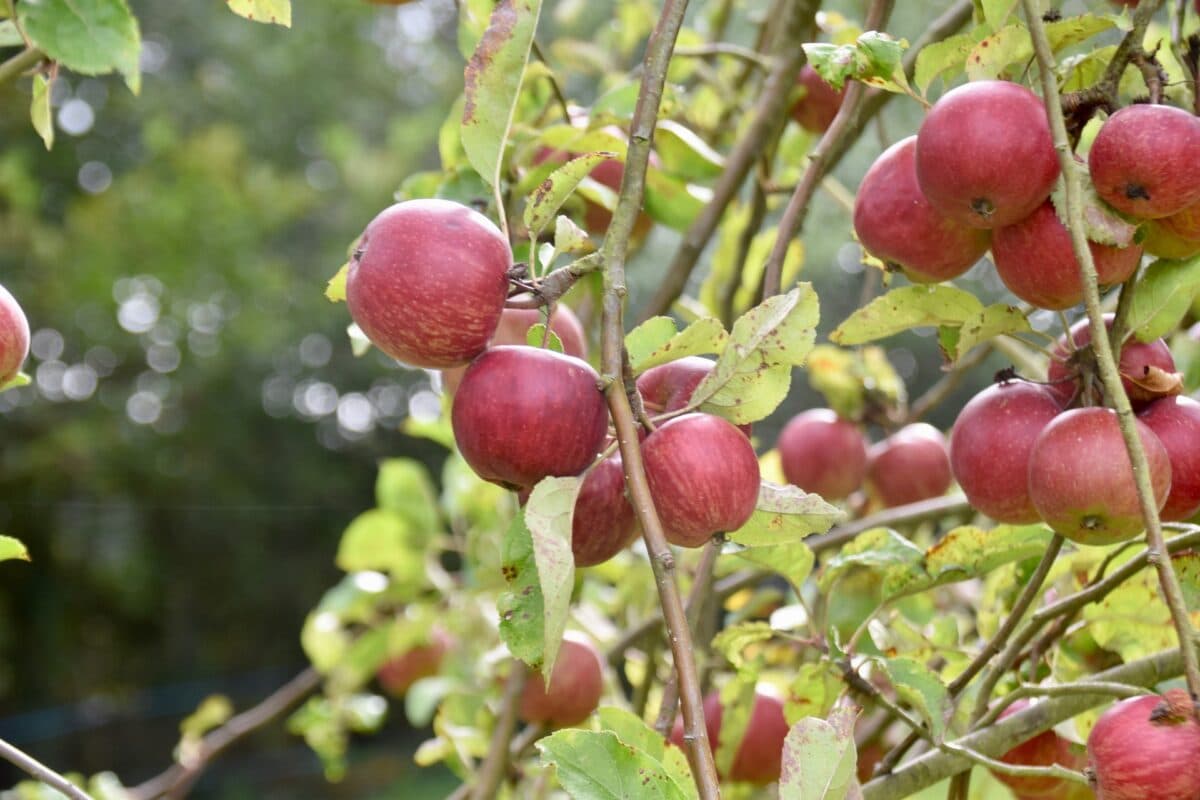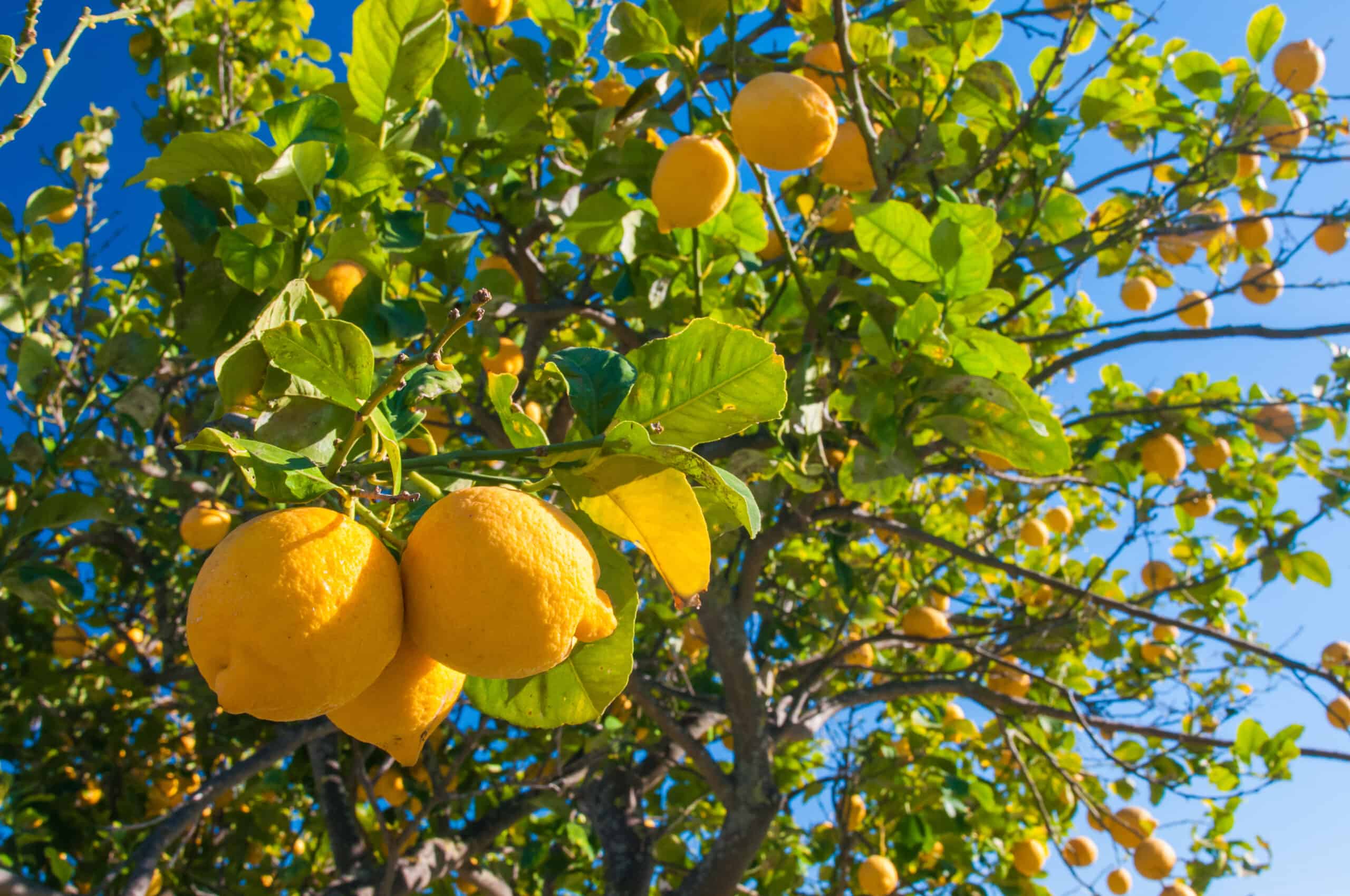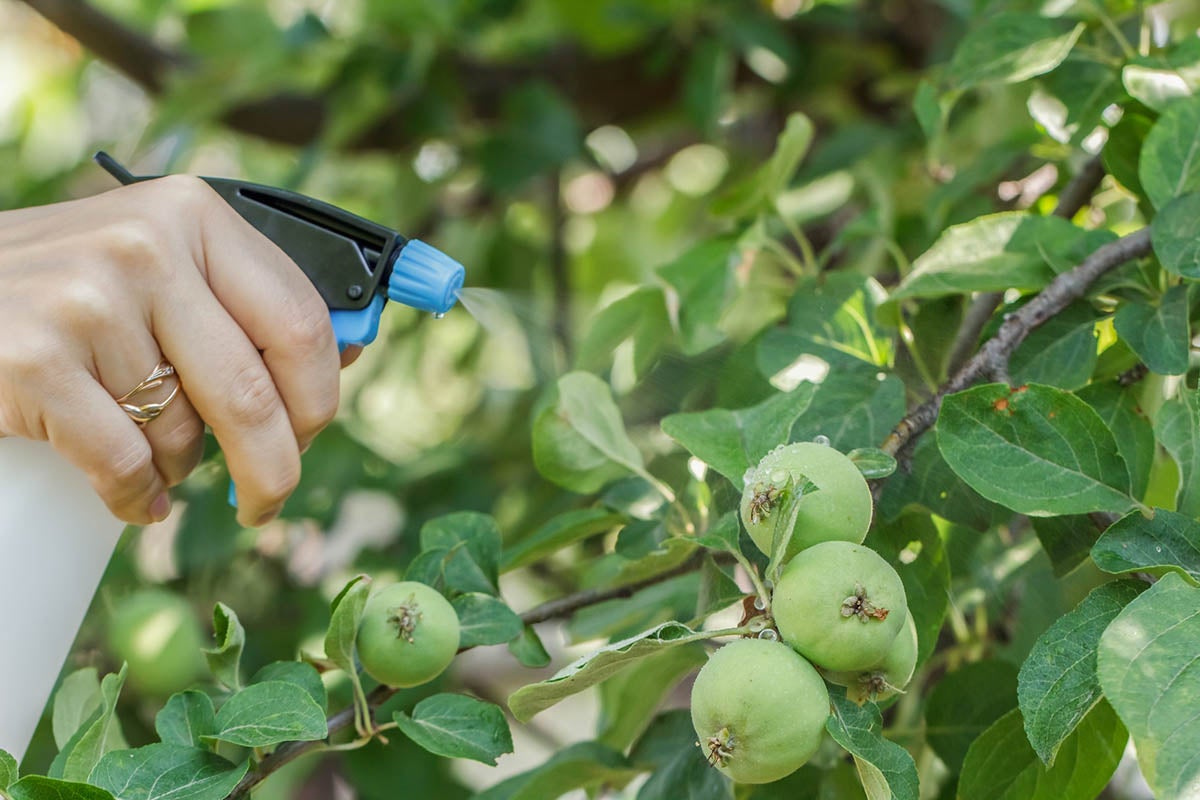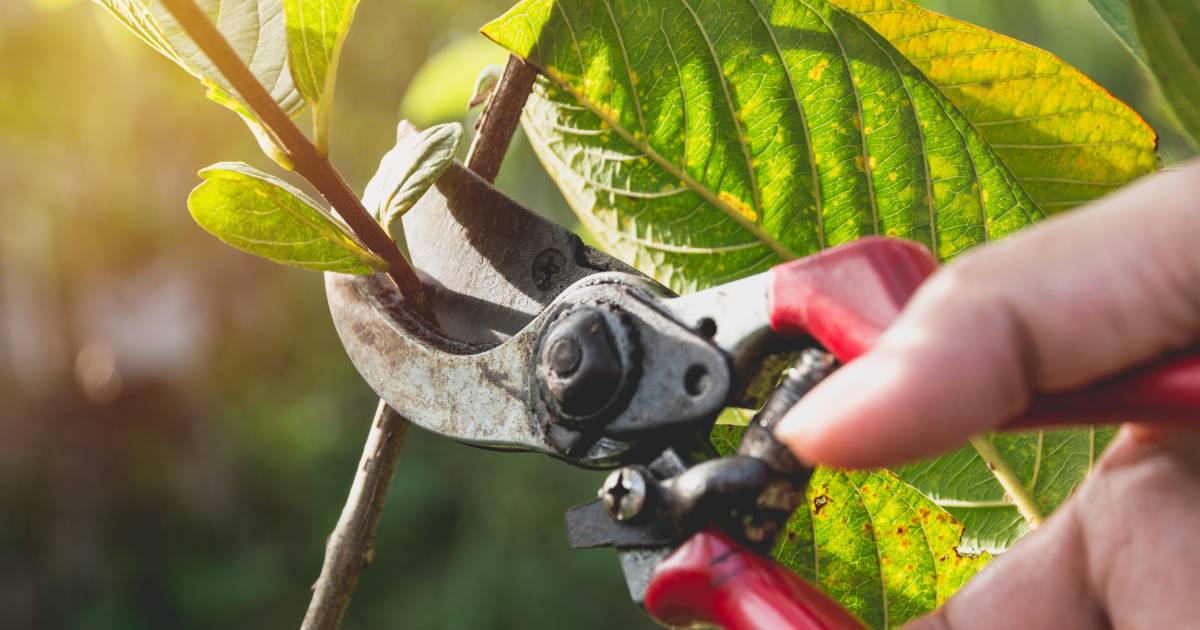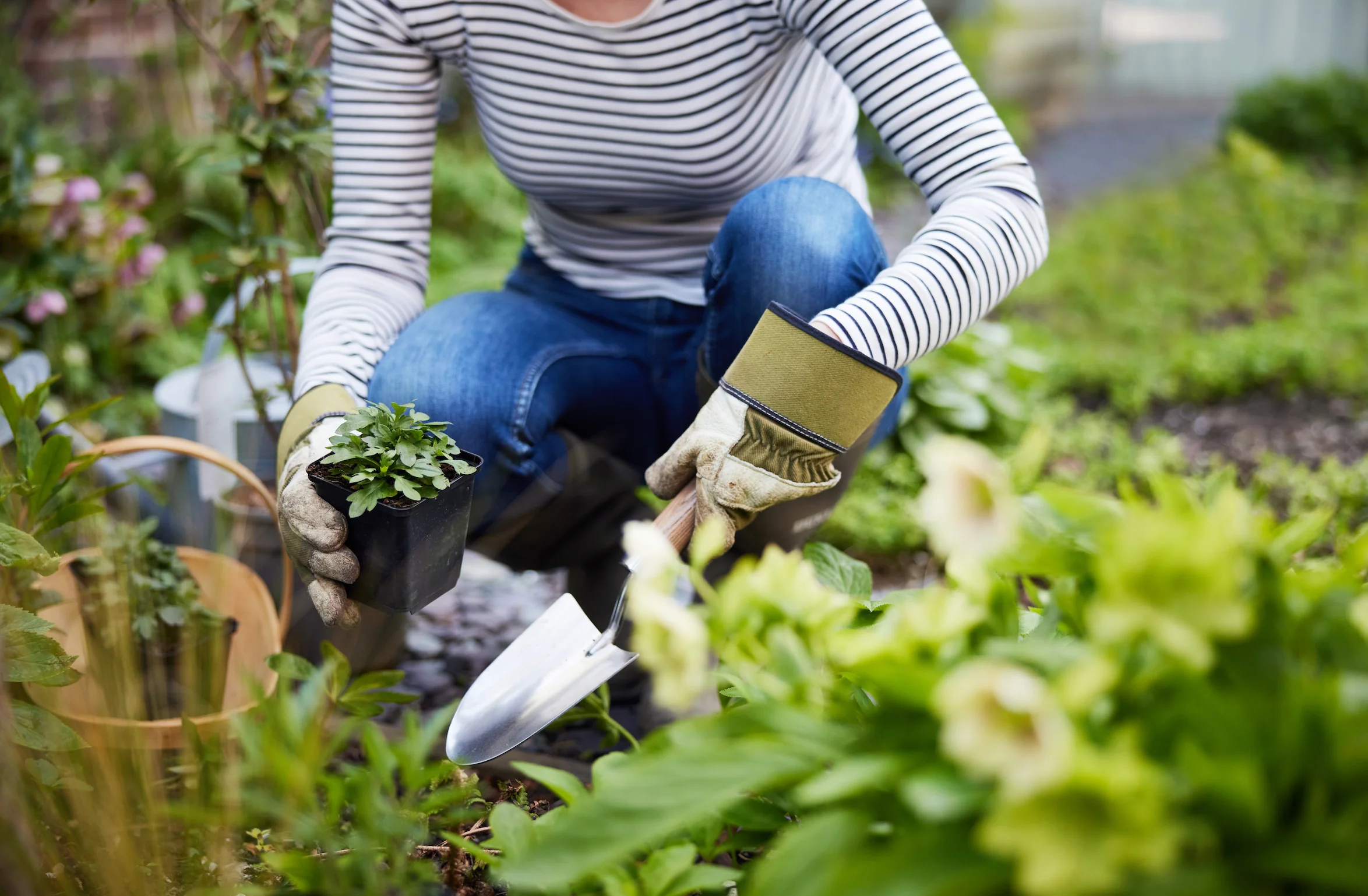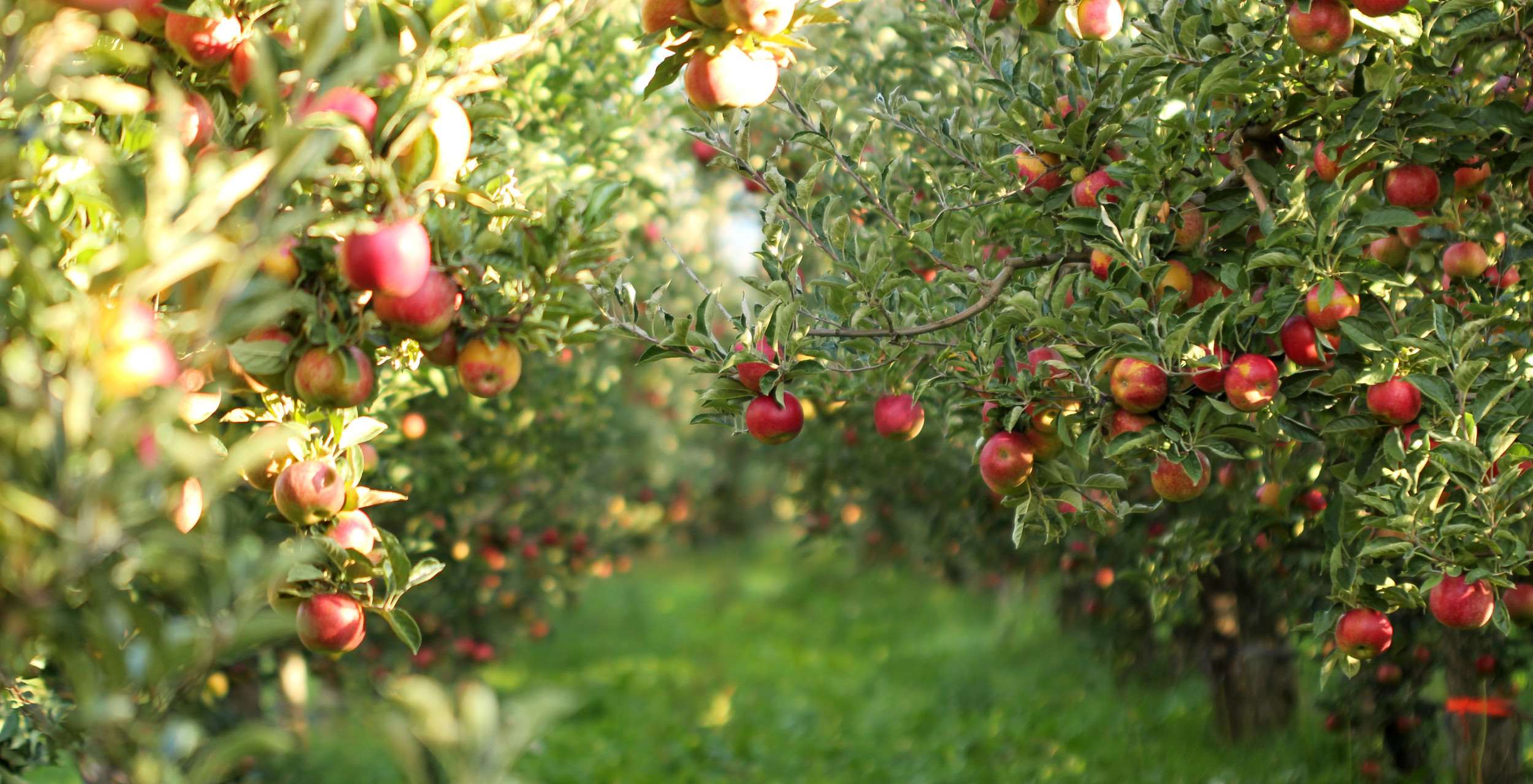Home>Types of Gardening>Edible Gardening>When To Plant Fruit Trees In Zone 7
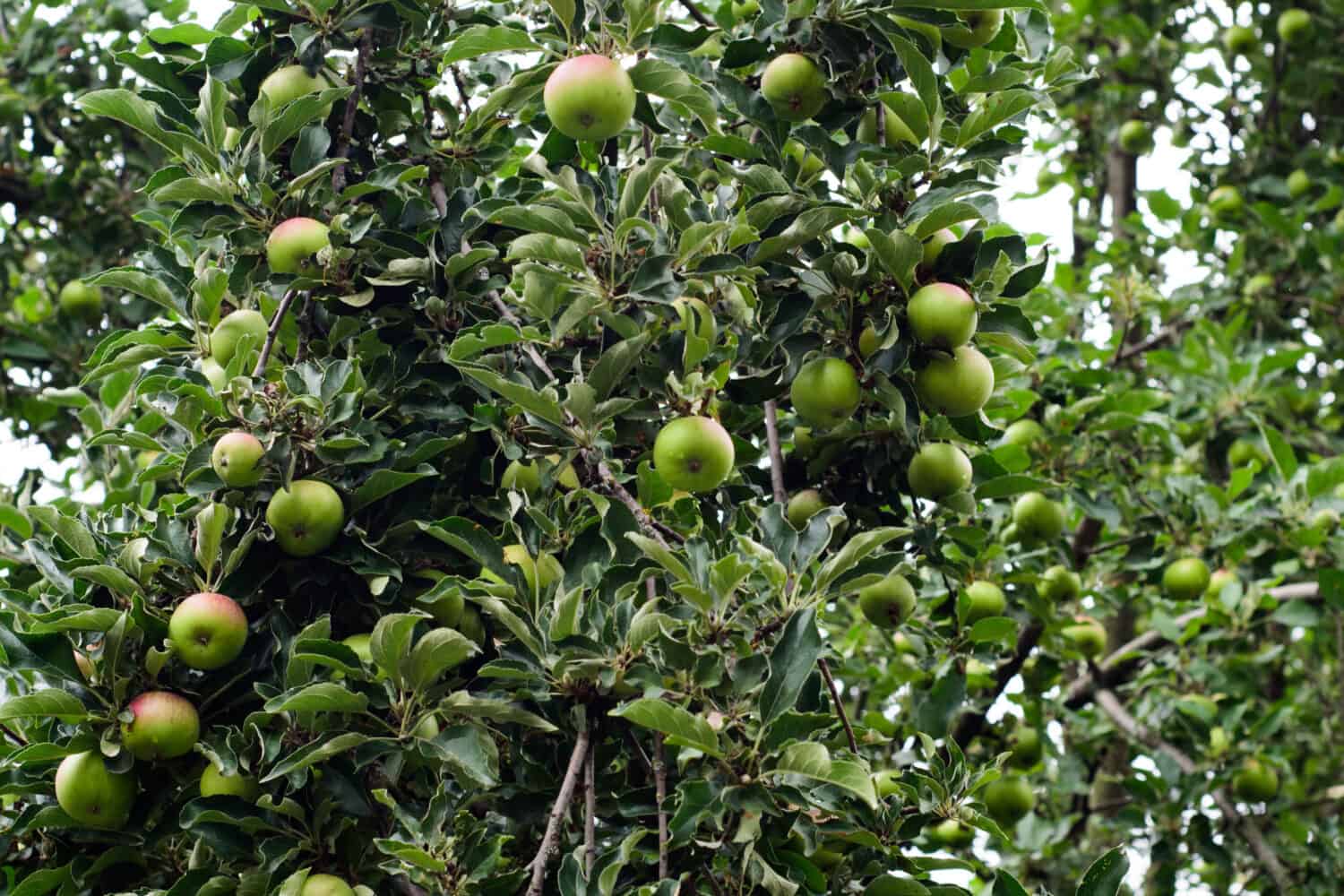

Edible Gardening
When To Plant Fruit Trees In Zone 7
Modified: January 22, 2024
Discover the perfect time for planting fruit trees in Zone 7 and begin your delicious journey of edible gardening.
(Many of the links in this article redirect to a specific reviewed product. Your purchase of these products through affiliate links helps to generate commission for Chicagolandgardening.com, at no extra cost. Learn more)
Table of Contents
Introduction
Welcome to the world of edible gardening! If you have a green thumb and a taste for homegrown fruits, you’ve come to the right place. Edible gardening allows you to not only enjoy the satisfaction of growing your own food, but also indulge in the flavors of freshly harvested produce. One of the most rewarding aspects of edible gardening is planting fruit trees. As you embark on this fruitful journey, it’s essential to understand when and how to plant fruit trees, especially if you’re in Zone 7.
Zone 7 encompasses a range of climates, including parts of the United States, where temperatures can dip as low as 0°F (-18°C) in winter. However, with proper planning and care, you can successfully grow a variety of fruit trees in this zone. Before getting your hands dirty, it’s important to consider a few key factors to ensure the success of your fruit trees.
Firstly, consider the available space in your garden. Fruit trees require adequate room to grow and spread their roots. Make sure to choose a suitable location where they will receive full sun for a minimum of 6-8 hours a day.
Next, think about the soil conditions. Fruit trees thrive in well-drained soil with a pH level of 6.0 to 7.5. Conduct a soil test to determine the current state of your soil, and amend it accordingly with organic matter, such as compost or aged manure, to improve its fertility and drainage.
Another important factor is choosing the right fruit trees for your specific needs and preferences. Each fruit tree has different requirements and characteristics, so it’s essential to select varieties that are well-suited to Zone 7’s climate and can thrive in the local growing conditions.
In this article, we will guide you through the process of planting fruit trees in Zone 7, from selecting the ideal varieties to understanding the recommended planting time. We’ll also provide tips on preparing the planting site, steps for planting the trees, and ongoing care to ensure their healthy growth. So let’s dive in and discover the joys of cultivating your own fruit trees in Zone 7!
Understanding Zone 7
Before diving into the specifics of planting fruit trees in Zone 7, it’s essential to have a good understanding of what Zone 7 entails. The United States Department of Agriculture (USDA) developed the USDA Hardiness Zone Map as a guide to categorize regions based on their average annual minimum temperatures. Zone 7 is known for its moderate winters, with minimum temperatures ranging from 0°F (-18°C) to 10°F (-12°C).
In Zone 7, fruit trees have to contend with both hot summers and winter chills. This presents both advantages and challenges for gardeners. On the positive side, the long and warm growing season allows for a variety of fruit trees to thrive, producing high-quality fruits. However, the occasional frost or snowfall in winter can pose a risk to some of the more delicate fruit tree varieties.
When selecting fruit trees for Zone 7, it’s important to consider their cold hardiness. Look for varieties that are specifically suited to Zone 7 or even lower zones to ensure their ability to withstand freezing temperatures. Established fruit tree nurseries often provide this information, indicating the hardiness zone range for each tree variety they offer.
In addition to cold hardiness, it’s also important to consider the heat tolerance of fruit trees in Zone 7. While winters may be mild, summers can bring scorching temperatures. Some fruit tree varieties may struggle with excessive heat and require proper care, such as adequate watering and sun protection, to prevent stress and damage.
Another important aspect to consider in Zone 7 is the variation in microclimates. Microclimates are small-scale areas within the larger zone that may experience different temperature extremes due to factors such as elevation, proximity to bodies of water, or local topography. Pay attention to these variations when selecting fruit tree varieties, as certain areas within Zone 7 may be more suitable for certain types of fruit trees than others.
By understanding the characteristics of Zone 7 and the specific microclimate of your garden, you can make informed decisions when selecting fruit tree varieties that can thrive in your area. Now that we have a solid grasp on Zone 7, let’s move on to the factors to consider before planting your fruit trees.
Factors to Consider Before Planting
Before you begin planting fruit trees in Zone 7, there are several important factors to consider. These factors will help ensure the success and productivity of your fruit trees, allowing you to enjoy a bountiful harvest for years to come.
1. Space: Fruit trees require adequate space to grow and spread their roots. Consider the mature size of the tree and ensure that you have enough room for it to flourish without crowding other plants or structures nearby.
2. Sunlight: Fruit trees thrive in full sun, which typically means at least 6-8 hours of direct sunlight per day. Choose a planting location that receives ample sunlight throughout the day to promote healthy growth and fruit production.
3. Soil Quality: The quality and composition of the soil are crucial for the health of your fruit trees. Conduct a soil test to determine its pH level and nutrient content. Most fruit trees prefer a slightly acidic to neutral soil with a pH range of 6.0 to 7.5. Amend the soil as necessary by adding organic matter, such as compost or aged manure, to improve drainage and fertility.
4. Water Drainage: Ensure that the planting site has good drainage to prevent waterlogged soil. Poor drainage can lead to root rot and other diseases. If your soil tends to retain water, you may need to create raised beds or improve drainage through other means.
5. Climate: Consider the climate conditions specific to your Zone 7 location. While Zone 7 generally has moderate winters, it’s still important to choose fruit tree varieties that are cold hardy and can withstand occasional frost and snow. Take note of your microclimate, as variations within Zone 7 can impact the suitability of certain fruit tree varieties.
6. Pollination: Many fruit trees require cross-pollination to produce fruit. Research the pollination requirements of the specific fruit tree varieties you’re considering and ensure that you have enough space to plant multiple trees or have nearby pollinator-friendly plants.
7. Disease and Pest Resistance: Some fruit tree varieties have better resistance to certain diseases and pests than others. Consider selecting disease-resistant varieties to reduce the risk of fungal infections and insect infestations. Additionally, practicing proper orchard management techniques, such as regular pruning and cleanup, can help prevent and control common fruit tree diseases and pests.
By taking these factors into account before planting, you can set your fruit trees up for success. Remember that proper planning and preparation will contribute to healthier trees, better fruit production, and a more enjoyable gardening experience.
Best Fruit Trees for Zone 7
When it comes to selecting fruit trees for Zone 7, it’s important to choose varieties that are well-suited to the climate and growing conditions of the region. The following fruit trees are known to thrive in Zone 7 and are popular choices among gardeners:
1. Apple Trees: Apple trees are a classic choice for Zone 7 gardens. There are many varieties available, each with its own unique flavor, texture, and storage qualities. Some recommended apple tree varieties for Zone 7 include ‘Granny Smith’, ‘Golden Delicious’, and ‘Fuji’.
2. Peach Trees: Peaches are a delightful addition to any home garden. These juicy fruits thrive in the warm summers of Zone 7. Varieties such as ‘Elberta’, ‘Redhaven’, and ‘Contender’ are known for their excellent flavor and productivity.
3. Pear Trees: Pear trees are well-suited to the climate of Zone 7, with their ability to withstand both cold winters and hot summers. Popular varieties for Zone 7 include ‘Bartlett’, ‘Anjou’, and ‘Seckel’, each offering a unique taste and texture.
4. Cherry Trees: While cherries can be challenging to grow in some regions, certain varieties are well-adapted to Zone 7. ‘Stella’, ‘Bing’, and ‘Rainier’ are recommended cherry tree varieties that can thrive in this climate, providing you with delicious summer fruits.
5. Plum Trees: Plum trees are a beautiful addition to any garden and can thrive in Zone 7. Varieties like ‘Santa Rosa’, ‘Methley’, and ‘Stanley’ are known for their excellent flavor and adaptability to a range of climates.
6. Apricot Trees: Apricots are a delicious and nutritious fruit that can be successfully grown in Zone 7. Varieties like ‘Moorpark’, ‘Blenheim’, and ‘Goldcot’ are well-suited to this region, offering sweet and tangy fruits for your enjoyment.
7. Nectarine Trees: Nectarines are closely related to peaches but have a smooth skin instead of a fuzzy one. They thrive in Zone 7’s warm summers, and varieties such as ‘Fantasia’, ‘Red Gold’, and ‘Sunred’ are popular choices for their juicy and flavorful fruits.
It’s important to note that the fruiting success of these trees will depend on factors such as proper planting, care, and specific microclimates within Zone 7. Consult local nurseries or extension offices for more specific recommendations based on your exact location.
By selecting fruit tree varieties that are known to perform well in Zone 7, you can enjoy a fruitful and abundant garden, filled with delicious homegrown fruits.
Recommended Planting Time
Choosing the right time to plant your fruit trees in Zone 7 is crucial for their establishment and long-term health. While specific planting times may vary depending on the fruit tree variety and local climate conditions, there are general guidelines to follow.
For deciduous fruit trees, such as apples, pears, peaches, and cherries, the recommended planting time is typically in early spring after the danger of frost has passed, but before the tree begins to leaf out. This allows the tree to establish its roots and adapt to its new environment before the summer heat sets in.
However, it’s important to note that bare-root fruit trees should be planted as soon as possible after purchase or receipt to prevent dormancy from being broken. These trees should ideally be planted in late winter or early spring, before bud break.
If you prefer planting container-grown fruit trees, you have the flexibility to plant them in early spring or early fall. Planting in early spring allows the trees to establish roots before the summer heat, while fall planting gives them a head start on root development before winter dormancy.
When planting fruit trees, it’s essential to consider the specific microclimate of your location. If you live in an area prone to late spring frosts, it’s advisable to delay planting until the risk of frost has passed. Additionally, pay attention to weather patterns to ensure you’re not planting during excessively hot or dry periods, as this can stress the newly planted trees.
Before planting, prepare the soil by removing weeds, loosening it with a garden fork or tiller, and incorporating organic matter to improve fertility and drainage. Dig a planting hole that is wide and deep enough to accommodate the tree’s roots without bending or crowding them.
Proper planting techniques are essential for the success of your fruit trees. Ensure that the tree is planted at the same depth it was growing in its container or nursery, and backfill the hole with amended soil. Water the tree thoroughly after planting, and apply a layer of mulch around the base to conserve moisture and suppress weeds.
By planting your fruit trees at the recommended time, you give them the best chance of establishing themselves and thriving in your Zone 7 garden.
Preparing the Planting Site
Preparing the planting site for your fruit trees in Zone 7 is essential to create optimal growing conditions and ensure their long-term success. By taking the time to properly prepare the site, you can enhance soil fertility, improve drainage, and provide a favorable environment for your trees to thrive.
1. Clear the Area: Start by clearing the planting area of any existing vegetation, including weeds, grass, or other plants. Remove any debris, rocks, or large roots that may hinder the growth of your fruit trees.
2. Assess Soil Quality: Conduct a soil test to assess the quality and fertility of the soil. This will help you determine if any amendments are needed to improve the soil’s pH level, nutrient content, and drainage. Most fruit trees prefer slightly acidic to neutral soil with a pH range of 6.0 to 7.5.
3. Amend the Soil: Based on the results of your soil test, amend the soil as necessary. Incorporate organic matter, such as compost, aged manure, or peat moss, into the planting area to improve soil structure, fertility, and drainage. Work the amendments thoroughly into the soil to ensure they are evenly distributed.
4. Address Drainage Issues: Proper drainage is crucial for the health of your fruit trees. If the soil tends to be poorly drained or heavy, consider creating a raised bed or mound for planting. Alternatively, you can improve drainage by adding coarse sand or gravel to the soil mix. Avoid planting fruit trees in low-lying areas where water tends to accumulate.
5. Consider Microclimate: Assess the microclimate of your planting site within Zone 7. Take into account any variations in temperature, exposure to wind, or proximity to neighboring plants or structures. Consider planting your trees in a location that offers protection from strong winds and provides ample sunlight throughout the day.
6. Plan for Spacing: Adequate spacing between fruit trees is crucial for their optimal growth and development. Consider the mature size of the trees and leave enough room between them to allow for proper air circulation and sunlight penetration. Consult specific spacing recommendations for the fruit tree varieties you are planting.
7. Test Soil Moisture: Before planting, assess the moisture level of the soil. Dig a small hole in the planting area and check if the soil feels moist but not waterlogged. Avoid planting your fruit trees in overly wet or dry soil, as this can hinder their establishment and growth.
By thoroughly preparing the planting site, you provide your fruit trees with a solid foundation for healthy growth. Taking the time to address soil quality, drainage, and proper spacing will contribute to the overall success of your edible garden in Zone 7.
Steps for Planting Fruit Trees
Planting fruit trees in Zone 7 requires careful attention to detail to ensure their successful establishment and long-term health. By following these steps, you can give your fruit trees the best start possible:
1. Choose the Right Tree: Select high-quality fruit trees from a reputable nursery that are well-suited to Zone 7’s climate. Consider factors such as cold hardiness, disease resistance, and pollination requirements when making your selection.
2. Prepare the Hole: Dig a hole that is wide and deep enough to accommodate the roots of the fruit tree. The hole should be twice as wide as the root ball and slightly shallower than its depth. Loosen the soil at the bottom of the hole to promote root growth.
3. Place the Tree: Gently remove the fruit tree from its container and place it in the center of the planting hole. Ensure that the tree is positioned at the same depth it was growing in its container or nursery. The top of the root ball should be level with or slightly above the surrounding soil.
4. Backfill the Hole: Fill the hole with the amended soil, gently tamping it down to eliminate any air pockets. Take care not to compact the soil too firmly, as this can hinder water and air circulation to the roots.
5. Water Thoroughly: After planting, give your fruit tree a deep watering to settle the soil and provide hydration to the roots. Use a slow and steady stream of water to ensure deep penetration. Watering deeply encourages the roots to grow downward, promoting a strong and healthy root system.
6. Add Mulch: Apply a layer of organic mulch, such as wood chips, straw, or compost, around the base of the tree, leaving a gap around the trunk to prevent moisture accumulation. Mulch helps conserve soil moisture, suppress weeds, and regulate soil temperature.
7. Stake if Necessary: If your fruit tree is top-heavy or prone to wind damage, it may require staking for support. Use sturdy stakes and soft ties to secure the tree, making sure not to tie the trunk too tightly. Stakes should be removed after the first year to allow the tree to develop a strong trunk.
8. Provide Ongoing Care: Regularly monitor the moisture levels in the soil, especially during dry periods, and water accordingly. Prune the tree as needed to maintain its shape, remove dead or damaged branches, and improve air circulation. Apply organic fertilizers according to the specific needs of the fruit tree variety.
By following these steps, you can give your fruit trees a strong start and set them up for success in your Zone 7 garden. Remember to provide regular care and attention to ensure their healthy growth and abundant fruit production.
Caring for Fruit Trees in Zone 7
Once planted, your fruit trees in Zone 7 will require proper care and maintenance to ensure their long-term health and productivity. By following these key practices, you can help your fruit trees thrive in the unique climate of Zone 7:
1. Watering: Provide regular and adequate water to your fruit trees, especially during dry spells. Deep watering is essential, as it encourages the roots to grow deeply and become more resilient to drought. Watering deeply and less frequently is generally better than shallow, frequent watering.
2. Mulching: Maintain a layer of organic mulch around the base of your fruit trees to conserve moisture, suppress weed growth, and regulate soil temperature. Replenish the mulch as needed, keeping it a few inches away from the trunk to prevent moisture-related issues.
3. Pruning: Regular pruning is important to maintain the shape, health, and productivity of your fruit trees. Prune during the dormant season, typically in late winter or early spring, before the trees start to leaf out. Remove dead, damaged, or diseased branches, as well as any crossing or rubbing branches that may hinder air circulation.
4. Fertilizing: Apply organic fertilizers specifically formulated for fruit trees to provide essential nutrients. Follow the recommended application rates and timings based on the specific fruit tree variety. Avoid excessive fertilization, as it can lead to imbalanced growth and diminished fruit quality.
5. Pest and Disease Management: Monitor your fruit trees regularly for signs of pests and diseases. Common pests in Zone 7 include aphids, codling moths, and scale insects. Consider using organic pest control techniques or consult with a local extension office for recommendations based on the specific pests in your area. Proper sanitation, such as removing fallen fruits or leaves, can help reduce the risk of diseases such as fungal infections.
6. Thin Fruits: To ensure quality fruit production, thin out excess fruits when they are still small. This allows the remaining fruits to receive adequate nutrients, sunlight, and air circulation, resulting in larger and healthier fruits.
7. Winter Protection: In Zone 7, where winter temperatures can drop below freezing, protecting your fruit trees from extreme cold is crucial. Consider wrapping the trunks with burlap or applying tree wraps to prevent sunscald and frost cracks. Mulching around the base of the tree can also help insulate the roots during cold weather.
8. Monitor and Adjust: Continuously monitor the growth and health of your fruit trees. Adjust your care regimen accordingly based on the specific needs of each tree. Observing changes in leaf color, fruit development, or overall vigor can help identify any issues that need attention.
By providing these essential care practices, you can ensure the vitality and productivity of your fruit trees in Zone 7. Remember that each fruit tree variety may have slightly different requirements, so familiarize yourself with the specific needs of the trees you are growing.
Harvesting and Enjoying the Fruits
Harvesting and enjoying the fruits of your labor is one of the most rewarding aspects of growing fruit trees in Zone 7. When it comes time to harvest, follow these tips to ensure the best flavor and quality:
1. Timing: Harvest your fruits at the right stage of ripeness. Each fruit variety has its own indicators, such as color, texture, and fragrance, to determine when it is ripe. Consult reputable sources or local experts to learn about the specific ripening signs for the fruits you are growing.
2. Harvesting Techniques: Use proper harvesting techniques to avoid damage to the fruits and the tree itself. For delicate fruits like berries or cherries, gently pluck them from the tree or vine. For larger fruits like apples or peaches, give them a gentle twist to detach them from the branch. Handle the fruits with care to prevent bruising or puncturing.
3. Storage: If you have more fruits than you can consume right away, store them properly to prolong their freshness. Some fruits, like apples and pears, benefit from a period of storage to improve their flavor and texture. Store them in a cool, dry place with good air circulation. Check on the fruits regularly to remove any that show signs of spoilage or overripeness.
4. Preservation: Consider preserving your harvest through various techniques such as canning, jam-making, freezing, or drying. This allows you to enjoy your fruit harvest year-round and makes for wonderful homemade treats or gifts.
5. Culinary Delights: Get creative in the kitchen and explore the many ways to enjoy your homegrown fruits. Bake pies, make fruit salads, blend smoothies, or simply enjoy them fresh off the tree. Experiment with different recipes and share the delicious flavors with family and friends.
6. Sharing and Exchanging: If you have an abundant harvest, consider sharing the fruits with neighbors, friends, or local community organizations. You can also participate in fruit exchanges or swap events, where you can trade your excess fruits for different varieties grown by others in your community.
7. Savor the Harvest: Take the time to truly savor the flavors of your homegrown fruits. Appreciate the hard work and care that went into cultivating these delicious treats. Whether you enjoy them fresh or incorporate them into your favorite recipes, relish the taste and the satisfaction of growing your own food.
Remember, the joy of growing fruit trees in Zone 7 goes beyond the harvest. It’s about the experience of connecting with nature, nurturing plants, and witnessing the life cycle of these trees. So enjoy the process, celebrate the bountiful harvest, and savor the fruits of your labor!
Conclusion
Growing fruit trees in Zone 7 can be a rewarding and fruitful experience. By understanding the unique characteristics of Zone 7 and considering factors such as space, sunlight, soil quality, and climate, you can make informed decisions when selecting fruit tree varieties for your garden. Remember to choose varieties that are well-suited to Zone 7’s climate and have the ability to withstand both cold winters and hot summers.
Proper planting, care, and maintenance are essential for the success of your fruit trees. Take the time to prepare the planting site, ensuring optimal soil conditions and drainage. Follow the recommended planting times based on the type of fruit tree and the specific needs of your microclimate. Provide regular watering, mulching, pruning, and fertilizing to support the growth and productivity of your trees.
When harvest time arrives, relish the joy of picking your own delicious, homegrown fruits. Harvest at the right stage of ripeness and consider preservation methods to enjoy your harvest throughout the year. Share your bounty with others and savor the flavors in culinary delights.
Edible gardening, particularly with fruit trees, not only provides a sustainable source of fresh, healthy produce but also connects us to the natural world and ignites a sense of achievement. As you embark on your journey of growing fruit trees in Zone 7, remember to have patience, be attentive to the needs of your trees, and embrace the joys of nature’s bounty.
So, roll up your sleeves, dig into the soil, and watch your fruit trees flourish in Zone 7. With the right knowledge, careful planning, and a touch of nurturing, you’ll be able to enjoy the delights of homegrown fruits while reaping the many rewards of edible gardening.

